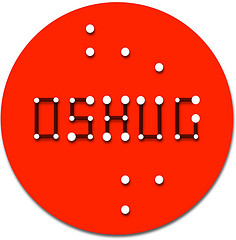For the third meeting we'll be asking the question "what factors contribute to the success of an open source hardware project?", and using Arduino and derivatives LilyPad Arduino and the concurrency.cc board as the basis for an informal case study
Current Cost Bridge - an Arduino based, hackable consumer device
The Current Cost Bridge was developed using the open-source Arduino platform. The reason for using Arduino, was to speed up the development process of the bridge, allowing for fast prototyping and producing a hackable device
Chris Dalby (twitter) is Lead Software Developer at Current Cost Ltd with over 10 years experience in software development and network infrastructure. Chris joined Current Cost in December 2009 to develop desktop and web based software for the Current Cost monitor range.
Chris Dalby and Paul Downey talking about the Current Cost Bridge from Matt Lucht on Vimeo.
Concurrency.cc - parallel programming for makers and artists
The concurrency.cc project describes itself as "a group of educators and researchers exploring the development of tools that make parallel programming more accessible to more people. Our hope is that concurrency.cc will serve the community of developers surrounding parallel and concurrent languages on the Arduino and other low-cost embedded platforms."
Adam Sampson is a research associate in the field of concurrent programming and complex systems simulation at the University of Kent. He has enjoyed electronics as a hobby ever since being told off for dismantling the family vacuum cleaner as a small child.
Omer Kilic (twitter) is a research student at the University of Kent working on dynamically reconfigurable architectures and embedded systems. He is passionate about the open-source hardware movement and likes tinkering, so much so that he founded TinkerSoc, The University of Kent Tinkering Society
Adam Sampson demonstrates a pair of concurrencyCC devices running an Occam driven LED display from Paul Downey on flickr
Adam Sampson and Omer Kilic talking with Dj Walker-Morgan after #oshug from Matt Lucht on Vimeo.
LilyPad - an Arduino based platform for wearables and e-textiles
The LilyPad Arduino is a microcontroller, plus a set of sewable electronic components designed so they can be put together to create interactive wearables or textiles based artworks. There is quite a range of components such as LEDS, sensors, buzzer, accelerometer and more that can be connected with conductive thread. The board is based on the ATmega168V/328Vand was designed and developed by Leah Buechley and SparkFun Electronics.
Rain Ashford (twitter) is Senior Producer at BBC Learning where she is presently across the BBC's Media Literacy supertopic portal. During her 10 years at the BBC she has developed and produced many of the BBC's high priority sites and online activities. Passionate about technology, she recently started a Women in Technology network for her colleagues to discuss careers, training, raising their profile and encouraging women to look at careers in tech. She previously worked for BBC R&D as a Technologist where she worked on the groundbreaking R&DTV project and the BBC's developer network, BBC Backstage, she's a hardware hacker, coder, artist, gamer and blogger.
Rain Ashford talking about Arduino and open source hardware from Matt Lucht on Vimeo.
